Hay is the most important part of your horse’s diet, chosen based on how it looks, smells or what you can get in your area if not grown yourself. Then you get your hay analysis and suddenly it feels like you’re decoding a secret language of numbers and acronyms — NDF, ADF, CP… what in the heck does it all mean? Don’t worry, we’re here to break it down as simply as we can so you know if you have the right hay for your horses’ needs!
Back to basics.
It can get incredibly confusing with the long list of values, so let’s make it simple and point out the basics. The first is when you see two different columns with two different values. These are Dry Matter vs. As-Fed columns. Guess we should be looking at one or the other, right? As-fed includes moisture content, so this is how your horse actually eats it, while dry matter basis removes the water and shows the true concentration of nutrients. Since water dilutes nutrients, we usually use Dry Matter Basis for accuracy when comparing hays head to head.
Next we have our Crude Protein (CP). This is the muscle maker and supporter. Horses need protein to grow, recover, and stay strong. A good range is ~10–19%. If your hay is under that, like around 9%, it might work for an easy keeper but could leave growing or working horses short changed without a boost from a ration balancer or concentrate.
The next section on the analysis is usually the fibres – ADF and NDF. Sounds boring really, but structural fibre is what gets your horses’ gut moving, keeps their microbiome happy and has them chewing so they’re pretty important values!
- ADF (Acid Detergent Fibre) tells you how digestible the hay is. Lower ADF (under ~35) means more nutrients get absorbed because it’s softer, less mature hay; higher (over ~40) means your horse will be doing more chewing and less digesting because it’s usually coarser and more mature.
- NDF (Neutral Detergent Fibre) tells you how much hay your horse can eat before they feel full. Low NDF (under ~50) means horses can eat a LOT before being full while high NDF (over ~60) fills them up fast, so they tend to eat less.
Ideally you want a moderate ADF and NDF so it’s digestible, but filling. However, hays that are higher in these values can be useful for overweight or easy keeping horses – in this situation a more mature hay could be the better choice and if needed you can add a more digestible fibre source into the diet. Lower values are usually needed for performance, growing and senior horses.
Energy and minerals.
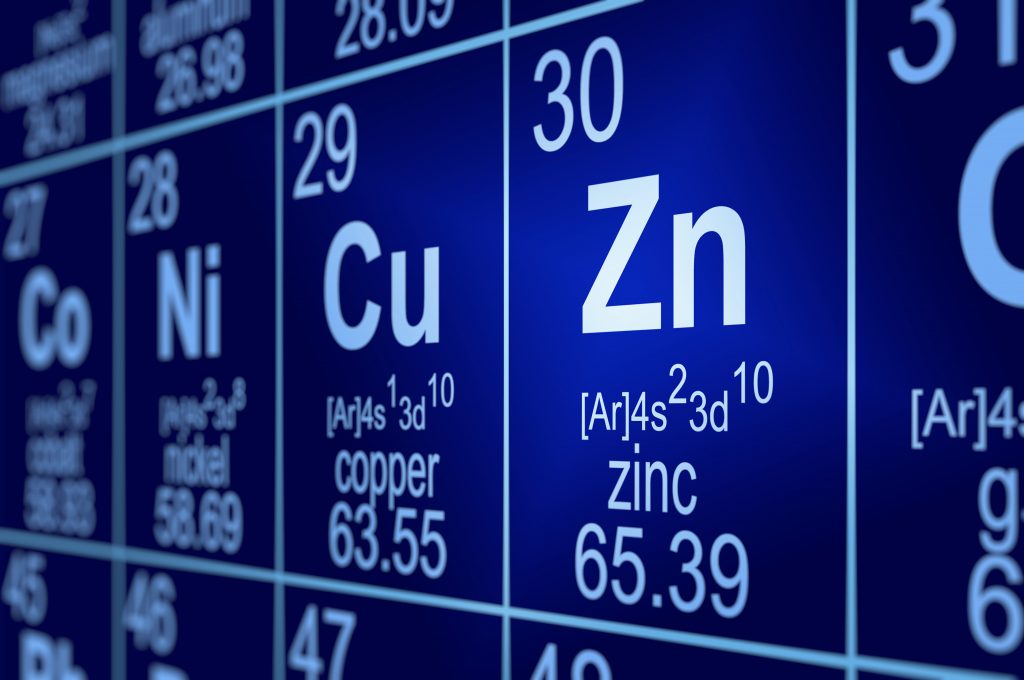
Once the “bulky” part of the hay is understood, we can look at a few other important components, hopefully without getting a headache!
For energy, you generally see “DE” (Digestible Energy) on your analysis which is calculated from the fibre and the carbohydrates levels. The DE tells you how calorie packed the hay is. 2.0-2.5 Mcal/kg is usually a good hay. Lower than this and your active or aged horse might need a little extra feed on the side to boost calories. Higher than this and your maintenance horse may be getting more fuel than they need! In general, look for under 2.0 for easy keeping friends, while that 2.0-2.5 is better for performance, reproduction and seniors or hard keepers.
While hay usually provides enough DE for a maintenance horse, even the best hays usually don’t provide everything they need mineral wise. Of all the minerals, pay close attention to the calcium and phosphorus – you want a Ca:P ratio at least 1.5:1 so there is more Ca than P. You can also bang your head against the wall trying to do the math on each trace mineral on your analysis to see what needs a top up, but to save yourself that headache, it’s generally accepted that critical trace minerals are most often too low in hay, so this is where a ration balancer or concentrate need to pick up the slack virtually all the time.
Sugars and starches.
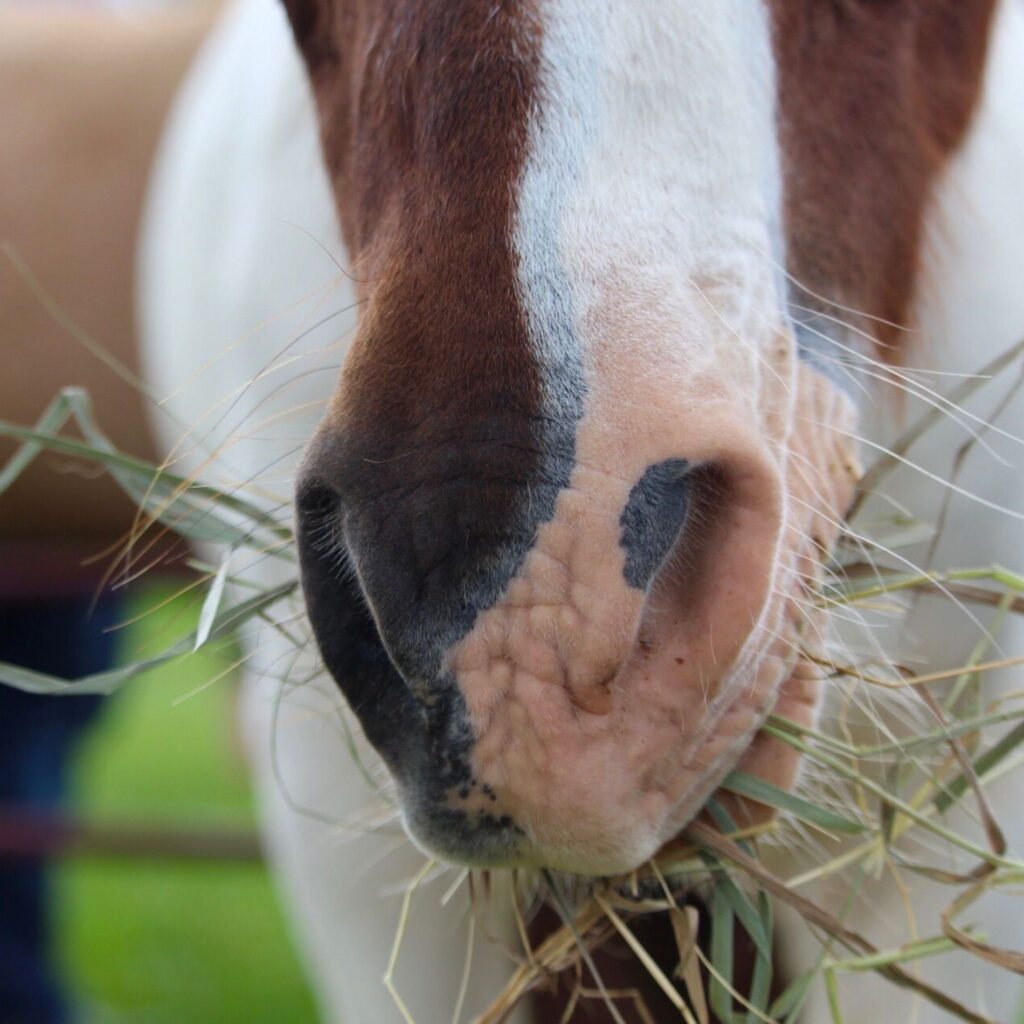
Of increasing concern among horse owners, we have our non-structural carbohydrates (NSCs) or sugars and starches. While this is not a concern for mature healthy horses (in fact, many performance horses need adequate starches in their diets to perform well), an increasing number of horses with metabolic challenges require a total diet lower in NSCs. And, seeing as how hay is the vast majority of the diet, THIS is truly where owners need to look to reduce sugars in the diet.
NSC has typically been the values of starch + WSC (water soluble carbohydrates). You may hear that ESC (ethanol soluble carbohydrates) is the more important number due to rate of absorption, but without getting into technicalities since we are trying to keep this as simple as we can – the total NSC value on your hay analysis is a good guideline if your horse has issues with sugars.
Luckily, *most* hays aren’t really too high in NSCs that we see grown in Canada, and the average healthy horse can tolerate relatively high numbers. But for metabolic horses, you’ll want to aim to feed a hay below ~12%. Soaking hay higher than this can help reduce sugars further, but be sure you are topped up on a mineral as other nutrients can be leached during soaking that horses need, particularly those with health challenges. Horses in high intensity sport, such as barrel racing, may need the help of a higher starch performance feed to properly fuel their needs.
The bottom line? Reading a hay test doesn’t have to be intimidating — it’s just about matching the hay to your horse’s needs. Need help figuring it out? We’re here to help you avoid overfeeding while making sure nutritional gaps from hay are filled appropriately for happier, healthier horses!
For more information or to schedule an on-farm call or hay analysis from one of our reps, visit our website, contact us, or email us directly at: happyhorses@masterfeeds.com
Product Spotlight
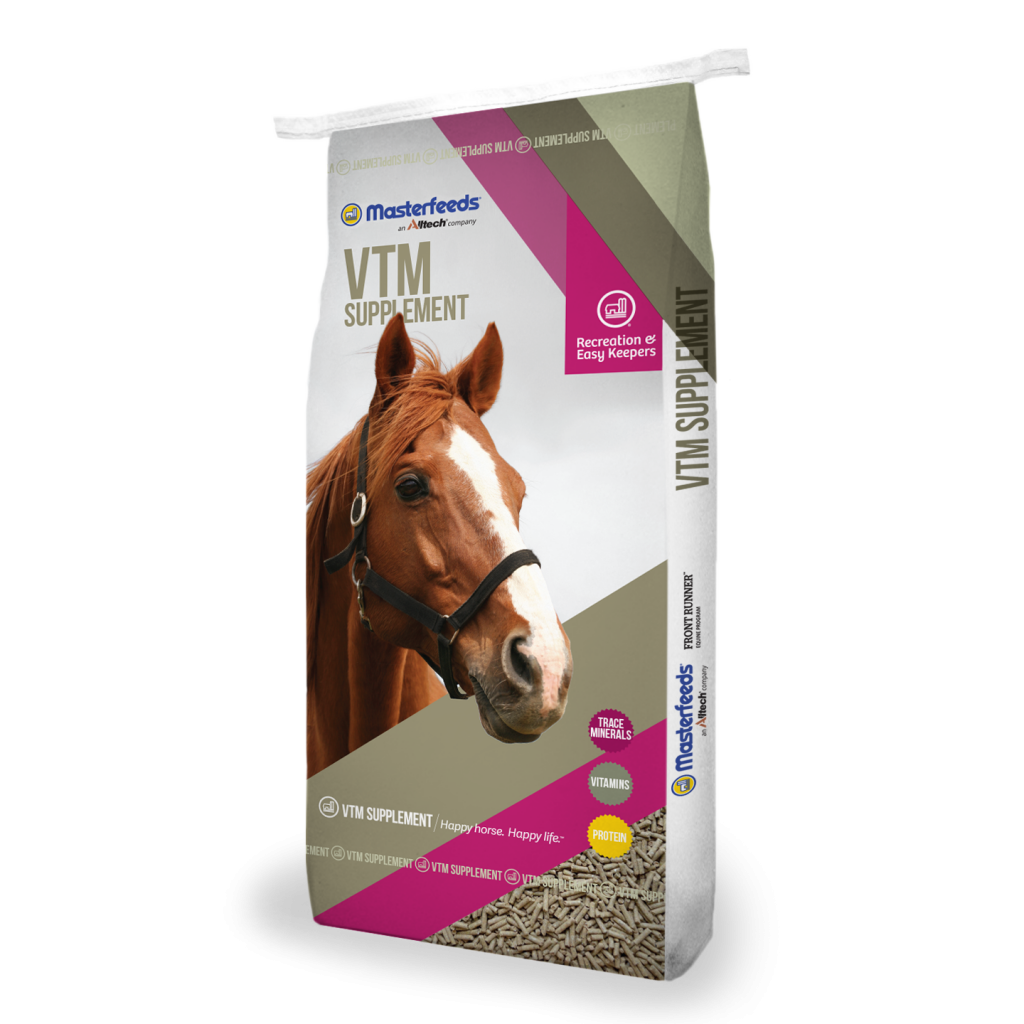
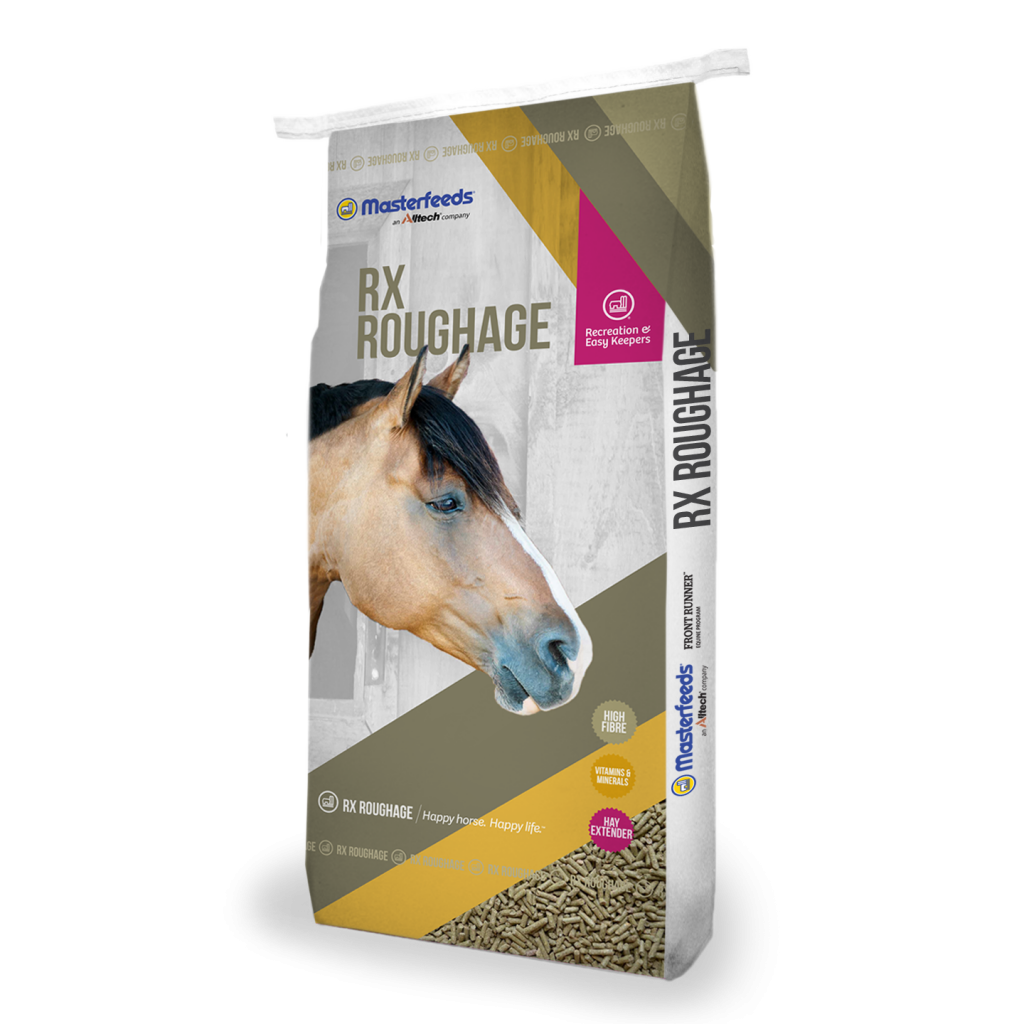
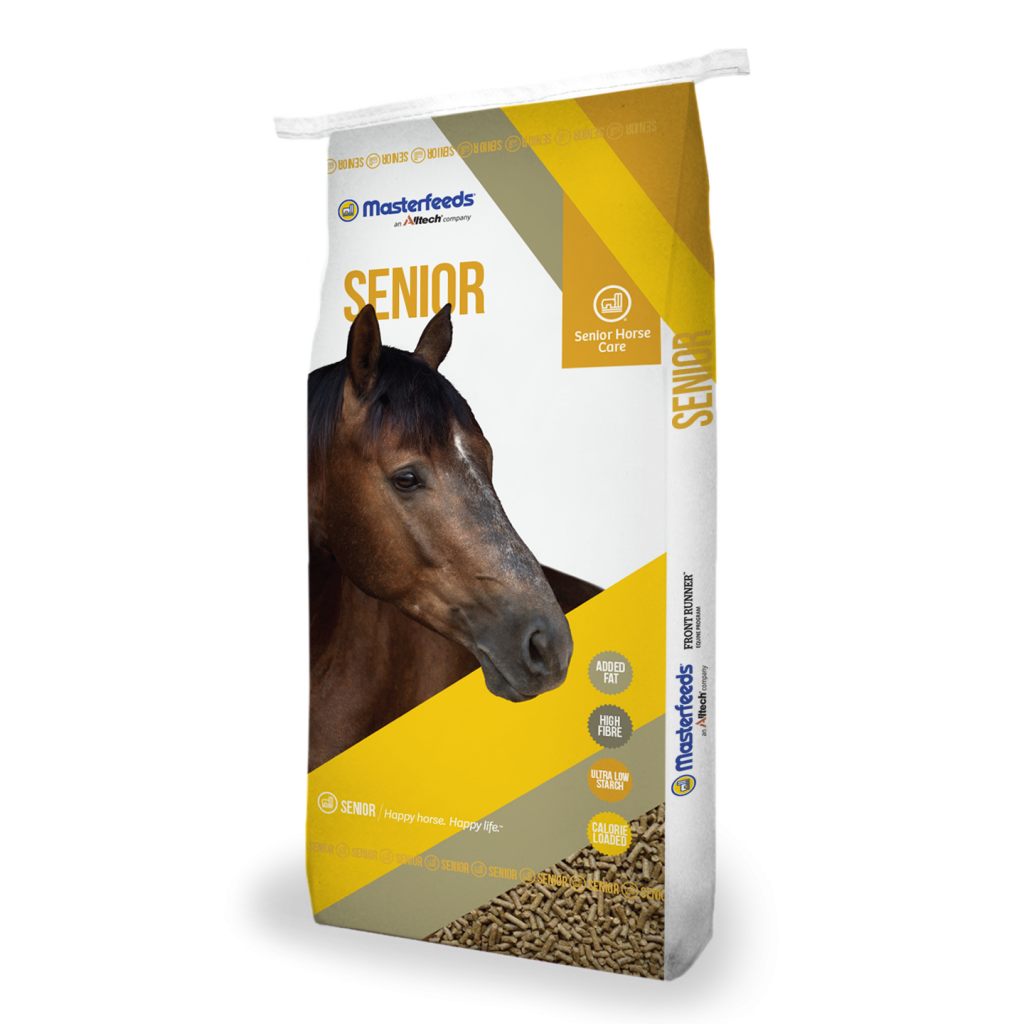
Product Spotlight
- Winter Nutrition Tips
- Feeding the Mare and Foal
- Breaking Down Nutrition
- Spring Nutrition Tips
- Feeding for Performance
- All About Hay
- Feeding the Senior Horse
- Fall Nutrition Tips
- Feeding Supplements
- Economical Horse Management & Feeding Tips
- The Beginner’s Guide to the Equine Digestive System
- Macronutrients: The “Big Three” of the Equine Diet
- Feeding the Active Senior
- Feeding the Racehorse
- Feeding the OTTB
- Feeding the First Few Years
 POSSIBLE CANADA POST DISRUPTION
POSSIBLE CANADA POST DISRUPTION